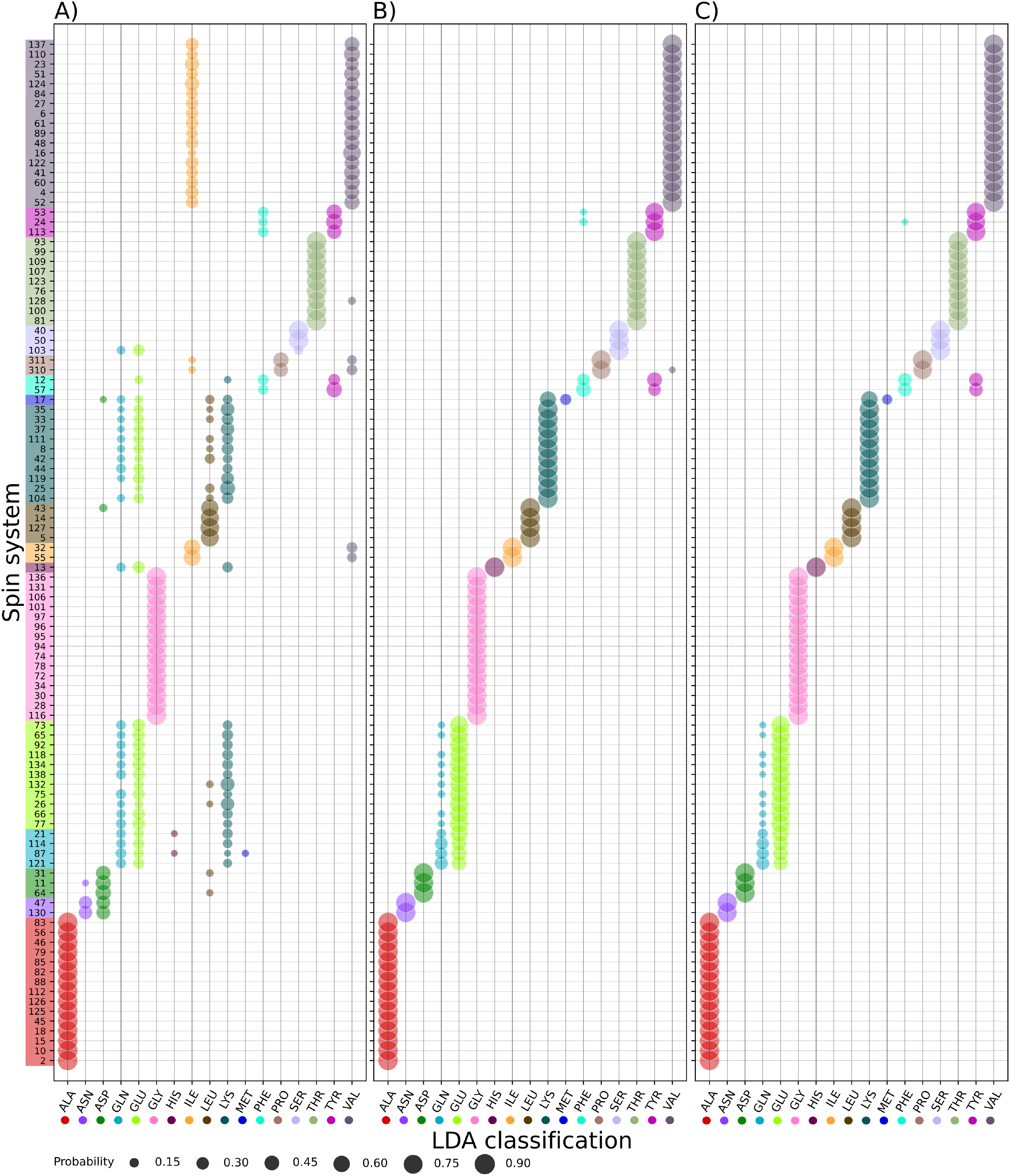Linear discriminant analysis reveals hidden patterns in NMR chemical shifts of intrinsically disordered proteins
Javier A. Romero, Paulina Putko, Mateusz Urbańczyk, Krzysztof Kazimierczuk, Anna Zawadzka-Kazimierczuk
NMR spectroscopy is key in the study of intrinsically disordered proteins (IDPs). Yet, even the first step in such an analysis—the assignment of observed resonances to particular nuclei—is often problematic due to low peak dispersion in the spectra of IDPs. We show that the assignment process can be aided by finding “hidden” chemical shift patterns specific to the amino acid residue types. We find such patterns in the training data from the Biological Magnetic Resonance Bank using linear discriminant analysis, and then use them to classify spin systems in an α-synuclein sample prepared by us. We describe two situations in which the procedure can greatly facilitate the analysis of NMR spectra. The first involves the mapping of spin systems chains onto the protein sequence, which is part of the assignment procedure—a prerequisite for any NMR-based protein analysis. In the second, the method supports assignment transfer between similar samples. We conducted experiments to demonstrate these cases, and both times the majority of spin systems could be unambiguously assigned to the correct residue types.

